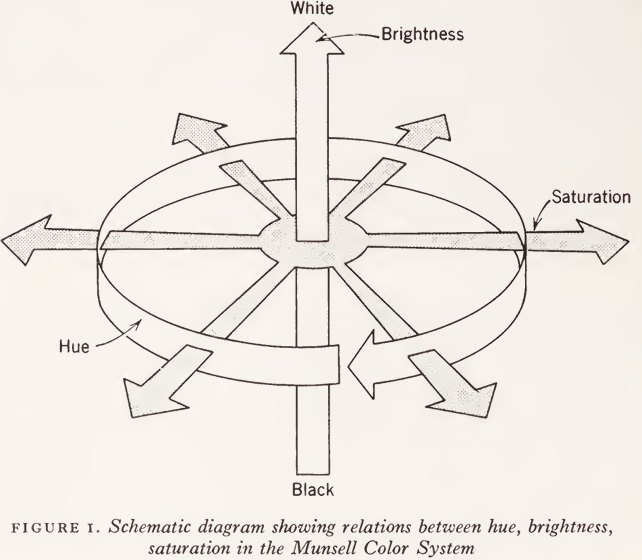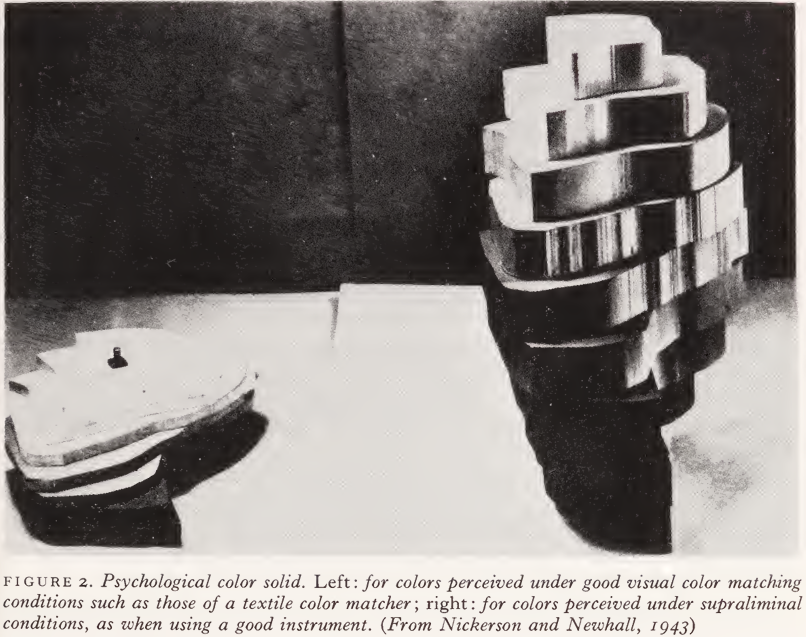
REFERENT SPACES
 المؤلف:
ERIC H. LENNEBERG
المؤلف:
ERIC H. LENNEBERG
 المصدر:
Semantics AN INTERDISCIPLINARY READER IN PHILOSOPHY, LINGUISTICS AND PSYCHOLOGY
المصدر:
Semantics AN INTERDISCIPLINARY READER IN PHILOSOPHY, LINGUISTICS AND PSYCHOLOGY
 الجزء والصفحة:
540-30
الجزء والصفحة:
540-30
 2024-08-25
2024-08-25
 1148
1148
REFERENT SPACES
If it is possible to describe phenomena completely and accurately in terms of certain dimensions, it is also possible to construct coordinate systems in which every point corresponds to one specific phenomenon. Every point on a thermometric scale corresponds to one specific temperature; every point within a pitch-intensity coordinate system corresponds to one specific pure tone. Sometimes such coordinate systems are called spaces.

The coordinate systems mentioned so far are unidimensional and two-dimensional spaces; for the specification of color we need a three- dimensional space, and since these spaces are merely abstract, mathematical concepts, one can also have four-, five-, and n-dimensional spaces. The three-dimensional color space is most easily visualized. Figure 1 shows the arrangement of the coordinates and Fig. 2 shows an actual model of a color space. The choice of a polar co¬ ordinate system is arbitrary. It offers some conveniences, but the three dimensions might have been arranged differently.
With the introduction of the notion of a color space we might review once more why we wish to arrange physical phenomena in this way. Our aim is to study how words relate to objects. But we cannot study the behavior of words unless we keep some control over the objects. We must do everything we can so as to bring some order into physical ‘reality’. We have chosen phenomena that can be measured and ordered with respect to each other. The color space is simply an ordering device that allows us to assign every possible color a specific position or point.

The entire world of color is encompassed in the color space. Our next step now is to discover how the color words of a given language, say English or Navaho, fit into this space. Where are the colors in our space that answer to the name red? Obtaining replies to this type of question will be called mapping color terms into the color space. Naturally, every language is likely to have somewhat different maps; but the color space, which merely describes the psychophysical properties of colors, is constant for all of mankind.
 الاكثر قراءة في Semantics
الاكثر قراءة في Semantics
 اخر الاخبار
اخر الاخبار
اخبار العتبة العباسية المقدسة


